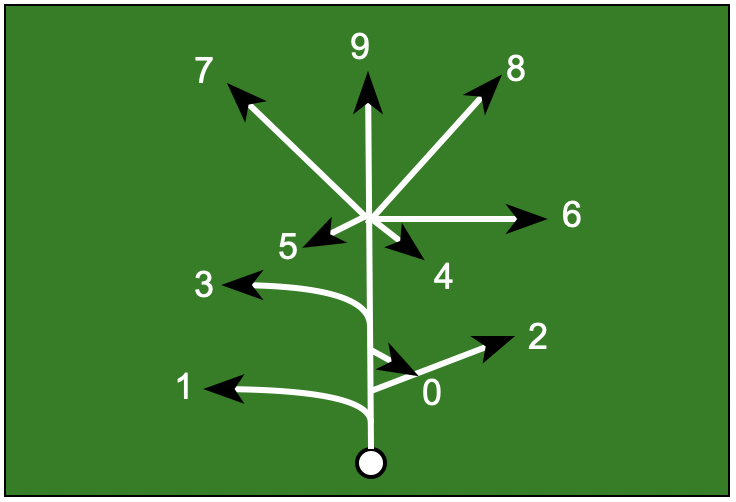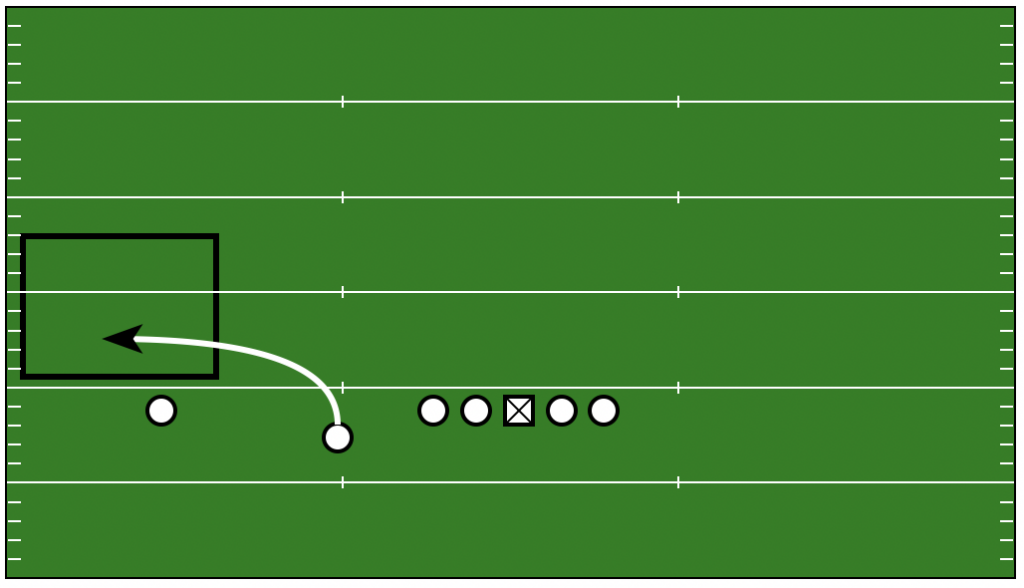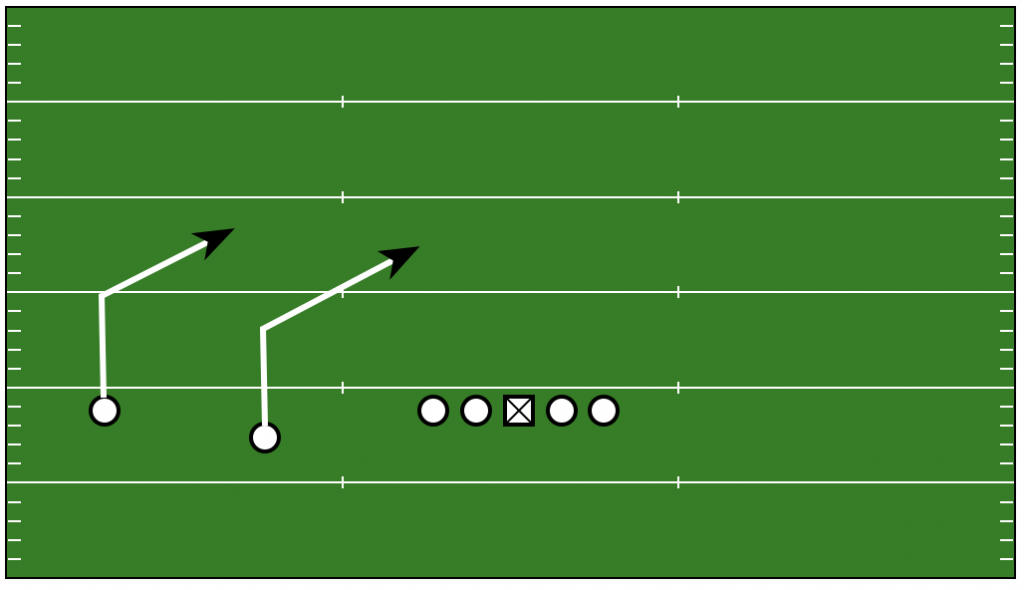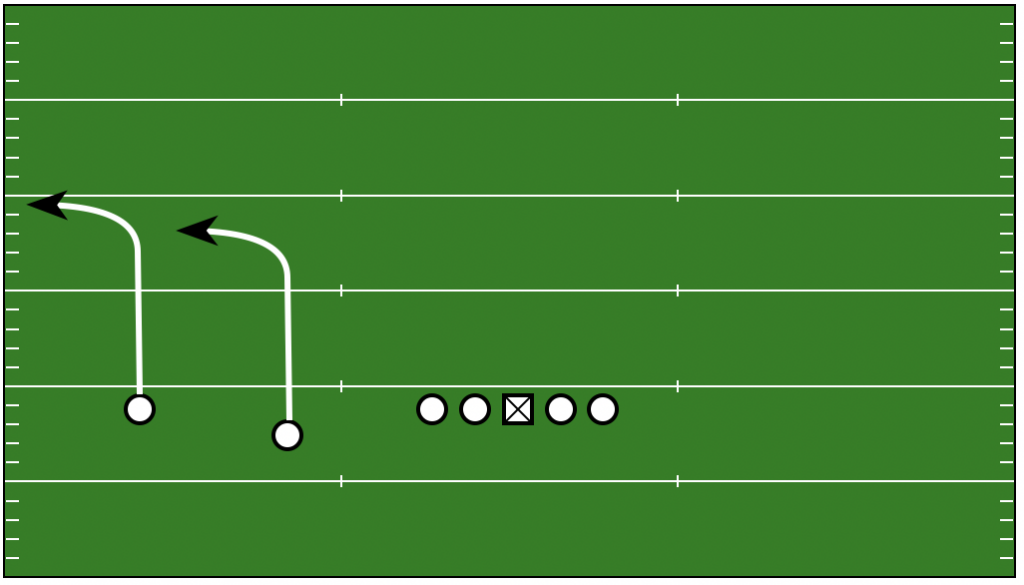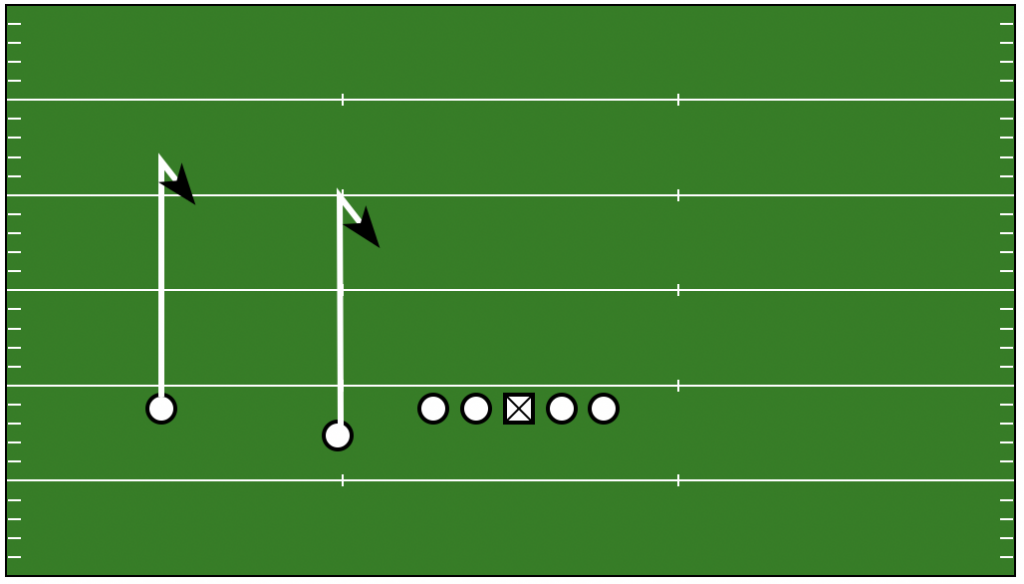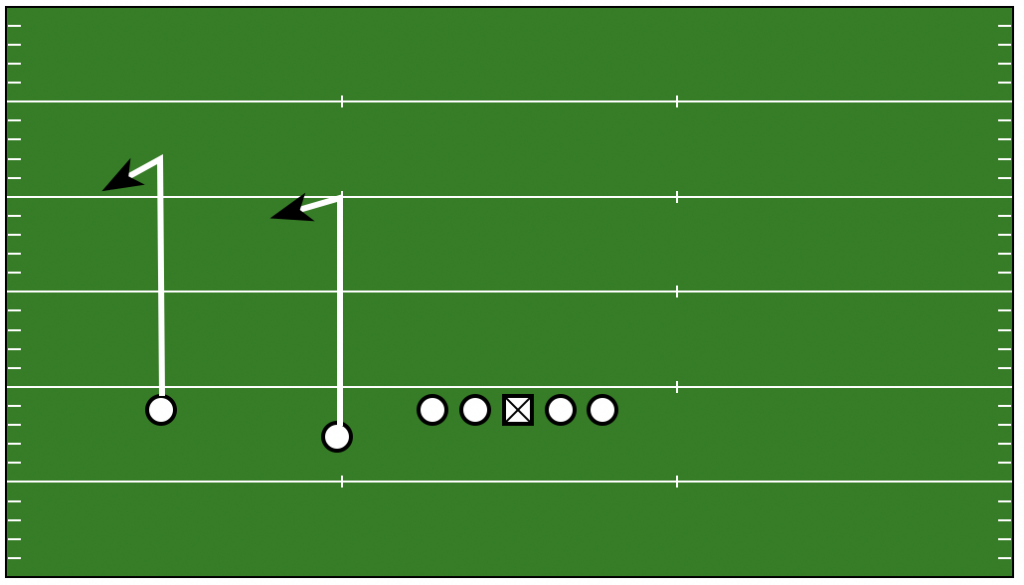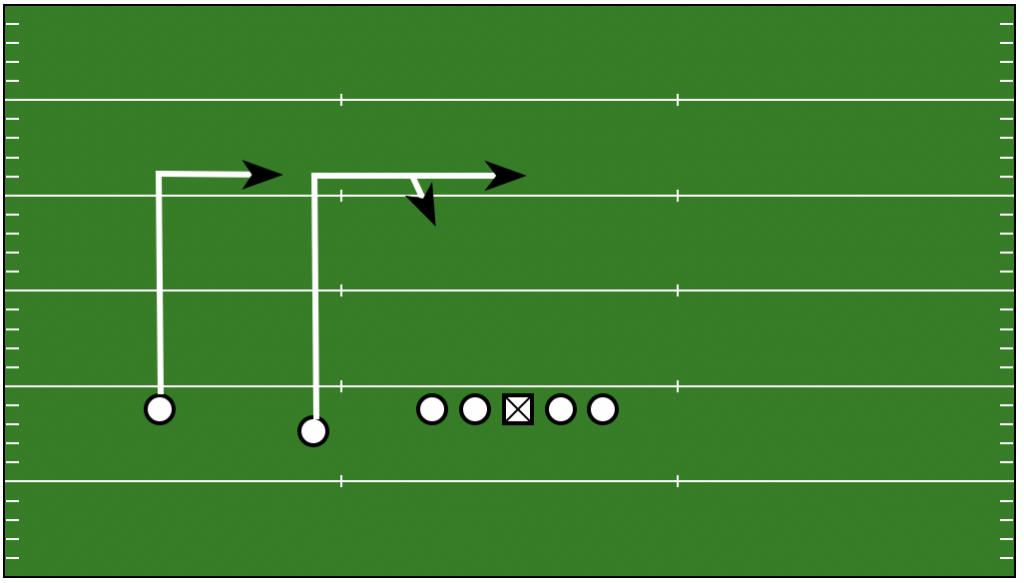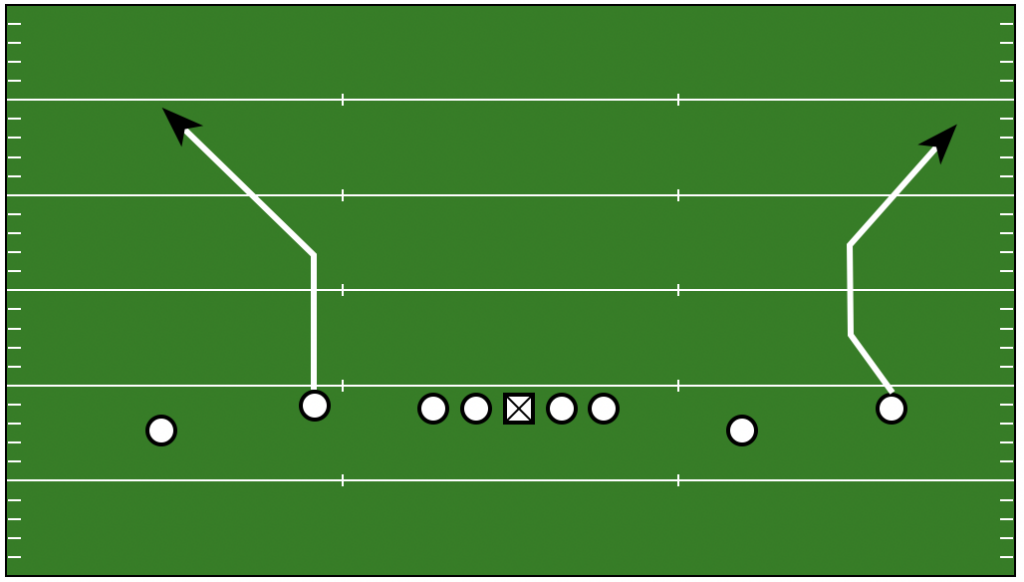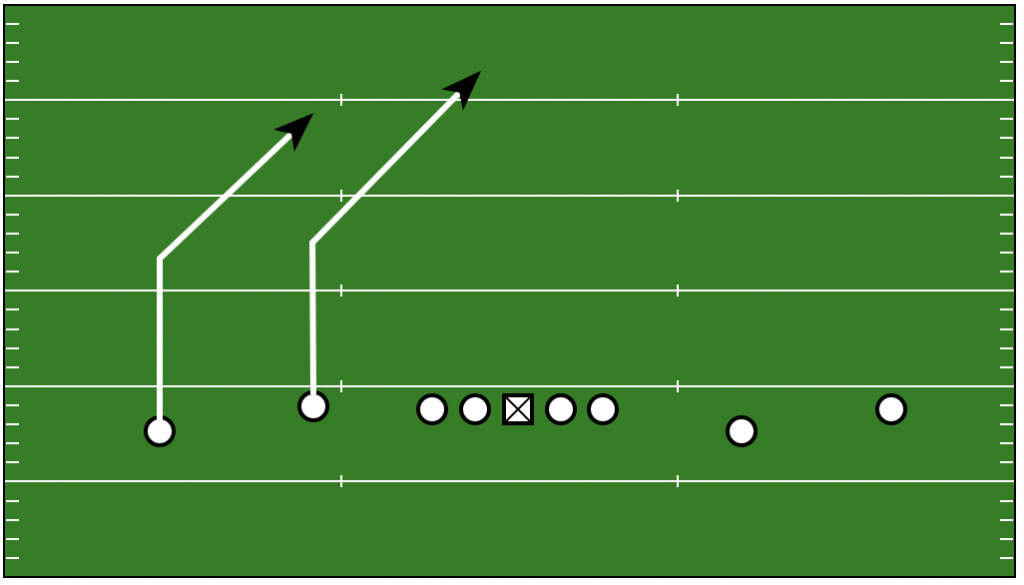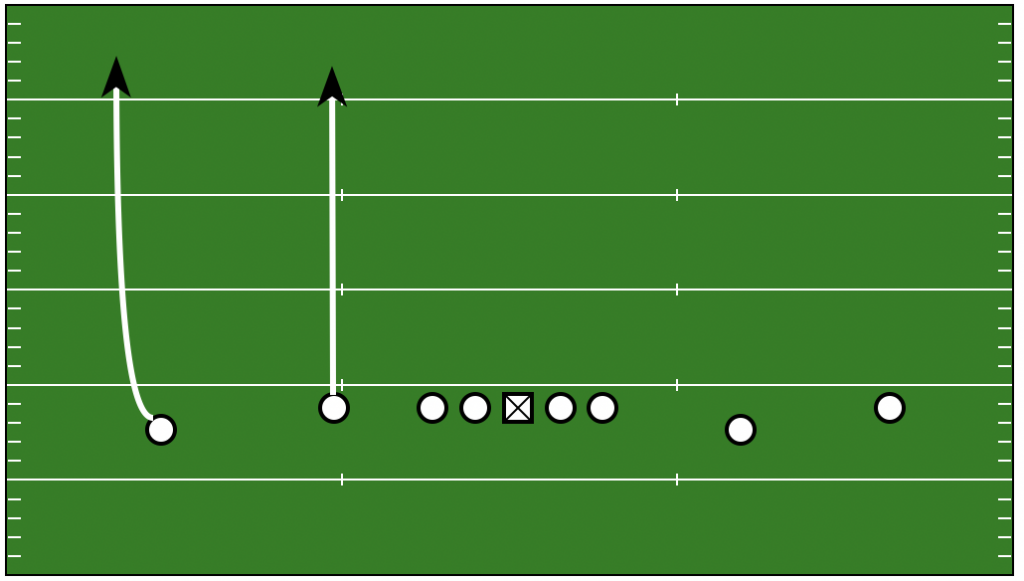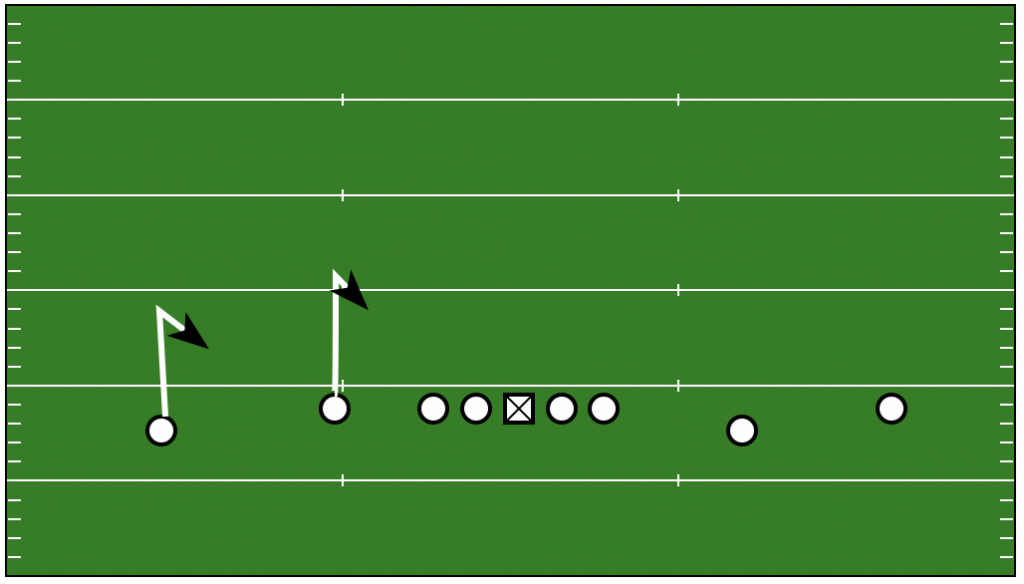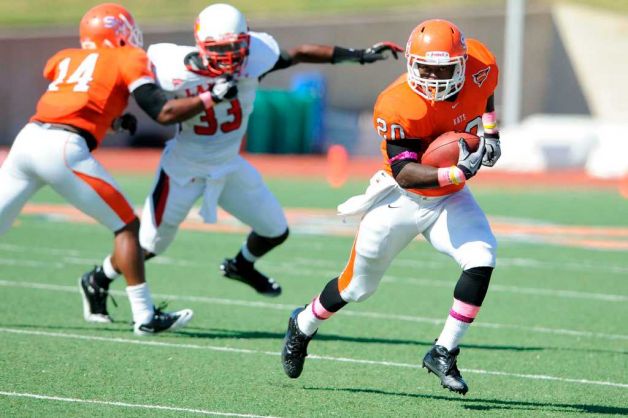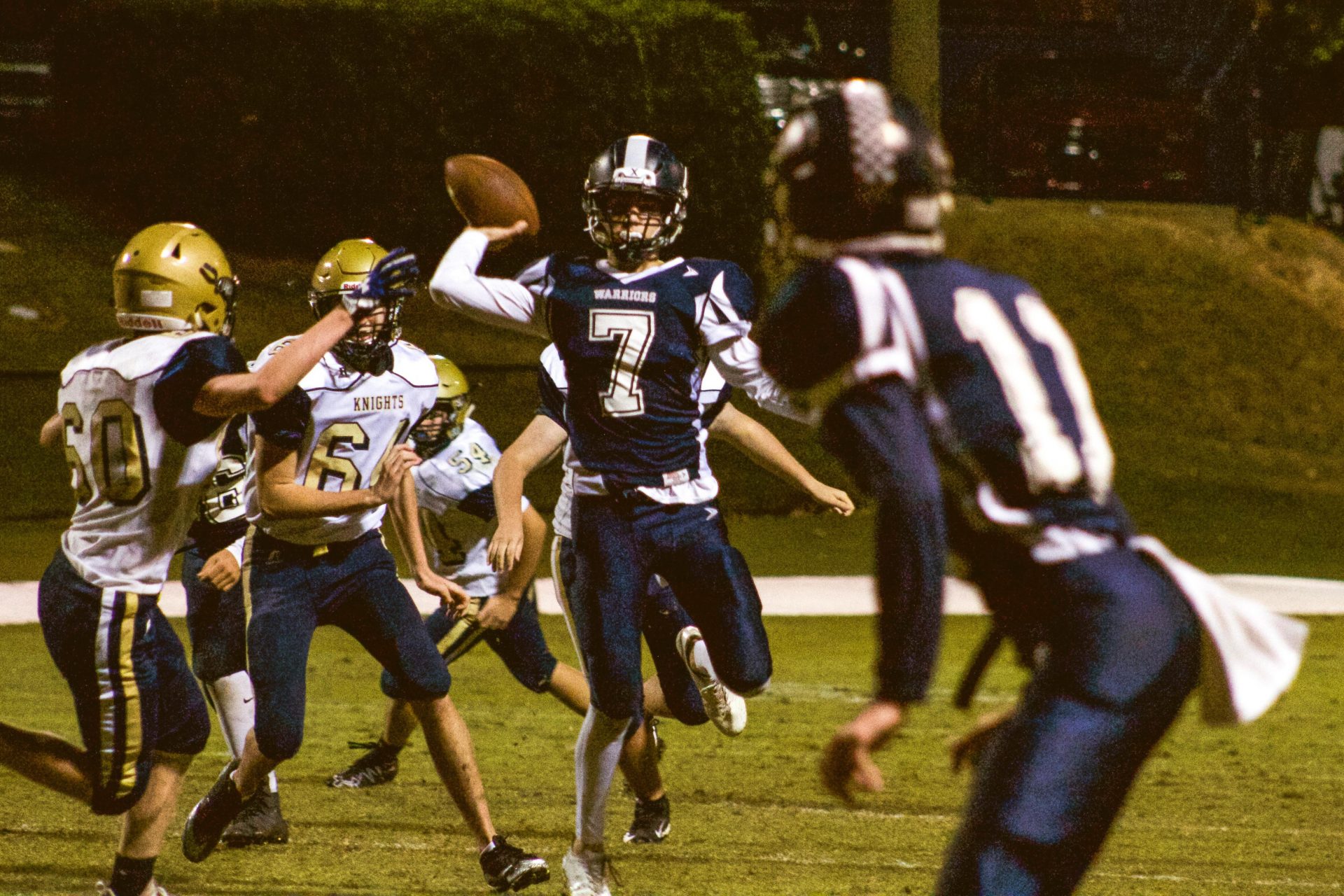When you think about football routes, everyone knows about the 9 route, but in this article, we will show you all the other routes in the wide receiver passing tree so you can see how they all work together.
The Football Routes Tree: What is it?
Coach Don Coryell created the football route tree in the 1960s and brought it to the NFL in the 1970s as a way to simplify passing concepts and quickly call plays for wide receivers.
The concept caught on and many teams began to use it as part of their Pro Style Offenses.
It is now used so frequently that each route number has a common understand among all football coaches.
Teams who teach the passing tree also use it to quickly call plays. Instead of a play call sounding like this: “Slant-Corner-Flat”
All the coach has to say or signal in is “2-7-1”.
That makes things operate smoothly and also allows teams to change things on the fly if they need to.
The first thing you should know about the route tree is that Odd-Numbered routes always finish going toward the sideline and Even Numbered routes always finish going toward the middle of the field or inside.
Another important thing to know is that every coach teaches their routes a little differently. Some of these variations we will cover in our review of every passing route below.
#1 Out Route
The Out Route is taught as one that quickly attacks the “Flats” area of the field. The Flats are basically anything less than 10 yard and outside the hashes.
To run a good out route a receiver must sprint out hard and turn quickly toward the flat area to force a defender to cover outside.
Most of the time the inside receiver seen above runs the route because there is more room and an outside receiver would end out out of bounds or too wide for the QB to get him the ball easily.
It is often used paired with other passing football routes from the outside because many defenses have to decide how to cover both deep and shallow routes out wide.
#2 Slant Route
The Slant route is an inside-breaking football route that is one of the most popular routes to quickly get the ball out – often used against man to man defenses because of it’s difficulty to defend.
Slant routes start with two big steps straight upfield and on the third step the receiver plants his outside foot in the ground and breaks inside at a 45 degree angle.
Because the slant route breaks inside it is easy to run from both the slot and the wide receiver positions.
There are also many variations of slant routes that can be used by changing up the angles of the break and the depth or steps before breaking off inside.
The main coaching point I always emphasize is that a slant route NEVER EVER goes behind a defender – always in front and inside.
#3 Speed Out Route
As we move farther up the football route tree we notice how each throw starts to get deeper. But it’s also a nice progression that helps your receivers know their depths better.
The Speed Out still attacks the flat area, but with more depth. It should be run about 8 to 10 yards deep.
What makes it effective is that it really looks like it’s going to be a deep route at the start. For a good 5 yards (about 5 steps), everything is made to look like a 9 route.
Then without any stopping the receivers lean hard to the outside and bend their route straight to the sideline. I tell them on their 5th step to start leaning and the 6th is the plant step to break out.
This is also a perfect route to throw against any coverage since it is a timing and a spot route.
Your QB knows exactly where they will be and when they will be there, so as long as there are no defenders near the spot, they can let it fly!
#4 Curl Route
The curl route increases the depth from the speed out a few more yards allowing it to be one of the most common routes used to get first downs in situations where teams need about 5-10 yards and want to pass the ball.
The best way to run it is to sprint all out to 10 yards and then use the next 2 yards to stop your momentum and then turn toward the inside and come straight back to the Quarterback.
It’s very effective because it puts the receiver in the advantage of moving back toward the ball as it is thrown. Since defenders are reacting, they should be late and unable to make a play.
Under defenders like linebackers who drop into zones also have a tough time if the receiver understands how to break in between defenders.
Usually, the curl football routes are a go-to for mid-level zone beater concepts. If you see Cover 3 then this is a great route to use to beat it.
#5 Comeback Route
The comeback route is almost exactly the same as the curl route except instead of turning inside, the receiver turns outside toward the sideline and the quarterback leads him toward the sideline.
This is a great route to use against man or zone defenses because they don’t think your receivers are going to stop running.
The challenge is to make sure your quarterback throws it on time and to the outside because if the throw is off to the inside it could result in an easy pick 6.
I prefer to throw the comeback from a sprint out type of pass to give my quarterback a much easier throw. He’s out of the pocket and closer.
Usually only very high level quarterbacks can make a comeback throw to an outside receiver from inside the pocket.
You also have to be cautious when your ball is placed on a hash because the comeback to the field side is very long. We always called it to the backside of a trips formations into the boundary. It works very well there.
#6 Dig Route
Dig football routes are a staple of all West Coast and Air Raid Offenses. Most of the time the inside or slot receiver will run it and it will be paired up with a shallow route coming from the opposite direction (I’ll cover more on the shallow route later)
The process for running a great dig route again starts with the burst off the line of scrimmage to somewhere about 10 to 14 yards.
Dig routes break inside and should be run behind the linebackers drop. This way they cannot see where the receiver is located while they are watching the Quarterback.
At break depth, the receiver stops and plants the outside foot to turn inside and accelerate across the field parallel to the line of scrimmage.
Most teams will have the receiver keep running until he finds an open window to catch the ball. He can then stop in the window or keep going until the next window if he doesn’t get the pass.
#7 Corner Route
The Corner Route is one of my favorites because it attacks deep on the outside but from an inside receiver position.
To run the #7 route the receiver bursts off the line and on the 6th step breaks outside on an angle toward the sideline.
Air Raid coaches teach it as a route that receivers should aim for the pylon in the End Zone after they break so they avoid running out of bounds.
If teams run a Cover 2 defense with Corners that press up and play the flats, a Corner Route is a great choice to run into the window behind them.
You can also run the route from the outside receiver position but he must either align closer to the middle of the field to have room or run a Burst Corner that releases inside before breaking out.
Receivers and QB’s must also be aware of defenders dropping under it and adjust the angle of their break accordingly.
#8 Post Route
The Post Route is named for the simple fact that after the break the receiver will be running toward the goal post in the middle of the field.
There are a lot of different ways to run a post but the most important factor is to run it into a deep opening in the field.
If there are two safeties then it should be run between them.
If there is just one safety in the middle of the field, the post should be run wider on the hashes.
As with all deep routes, this one starts with a good burst and then like the slant route, the receiver plants his outside foot into the ground and breaks in a straight line towards his aim point.
Quarterbacks who throw the post have to be able to identify deep downfield defenders who could break to the route. They take a good amount of consistent practice to get the timing and angles down correctly.
#9 Fly or Go Route
The final route in the route tree is the most popular of them all. It also fits well with the Odd number 9 even though there is no break to the outside.
The proper way to run a 9 route is to release or run around your defender to the outside. The Quarterback will then throw it deep and high and between the receiver and the sideline so only the receiver has a chance to catch it away from the defender.
The key coaching point I always used was to sprint first directly at your defender and try to get as close as possible before going around.
I used to say “step on his toes” which is not my original saying, but gives them a good idea how close we are trying to get.
Even though this route is the most popular, it is also one of the most difficult and many studies have shown that it has the lowest completion percentage.
To be successful, it takes a lot of timing practice with a quarterback who has a great arm and can judge the speed of his receivers well.
When this route is run from the outside receiver position it is called a Go or Fly route, when it is run from the inside position or slot, it is called a Seam.
The seam route is slightly different in that it’s purpose is to throw the ball over the Linebackers but under the safeties.
Football Routes Tree Conclusion
All 10 football routes in the passing tree are essential to putting together all different kinds of pass concepts. Many of them paired up work extremely well together.
As a coach, if you can get all players to know all 9 routes, then you can quickly put in thousands of different variations.
There is one final route I also like to include on the tree.
Running “0” Football Routes
That route is the 0 or Zero Route. This route is also called a “Hitch” route.
To run it you sprint three steps hard forward and then stop and turn to the inside where the ball should be arriving immediately.
The hitch route is a staple and should be run anytime a defender is 5 or more yards off the receiver. You can also practice the catch and turn outside to get extra yards upfield.
I’ve seen many hitch football routes turn into touchdowns because a Corner Back missed a simple tackle.
For a super detailed analysis on the Hitch Route Go HERE.
Hopefully, these common football routes are going to help you and stay tuned because we are going to go into much more detail on each route individually in our future posts.

